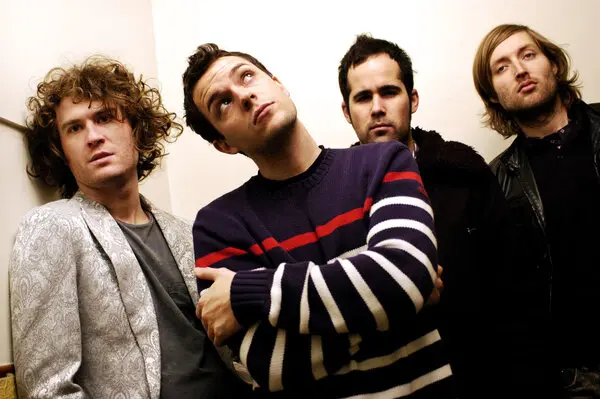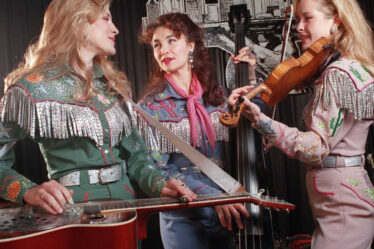
By: Ava Bedoya
An estimated 100,000 songs are uploaded to streaming platforms every single day. The rise of the internet paired with a rapid increase in accessibility to technology has made it easier than ever to make music of your own. With this massive uptick in music creation, it has become more and more difficult to produce something new and creative. It is nearly impossible to make new music without pulling inspiration from past artists or genres. The 1980s in particular brought one of the most impactful eras of music, as electronic-focused sounds grew in popularity. Now, over 30 years since the ‘80s came to an end, new music continues to pull inspiration from influential artists of that period. But what exactly defined the music of this iconic decade?
Synth-pop and electronic genres rose to fame during the ‘80s. Iconic English band Depeche Mode acted as a pioneer of synth-based music. They have been named as a major influence by acts like The Killers, Muse, Coldplay, and Nine Inch Nails. The Cure, another major force in alternative ‘80s music, is known for their moody, atmospheric sound. Smashing Pumpkins, Deftones, Modest Mouse, Slowdive, and more have praised the band for having such a profound impact on their music. Modern artists implement the sounds of the ‘80s in a variety of ways.
Sampling is an extremely common way to directly reference older songs. It involves taking a section of audio or music from another source, and reworking it into a newer piece. One of the most popular 2010s artists that often references 80s hits in his own music is The Weeknd. “House of Balloons / Glass Table Girls” from his debut mixtape House of Balloons opens with the vocals of Siouxsie Sioux, of Siouxsie and the Banshees. His chorus mirrors that of the band’s 1980 single “Happy House.” The Weeknd’s 2016 song “Secrets” includes both a sample and interpolation. Where a sample involves directly implementing a pre-existing audio file, interpolations include rerecordings of previously released songs. The chorus of “Secrets” interpolates that of the Romantics’ “Talking in Your Sleep” (1983), with the post chorus sampling Tears for Fears’ hit song “Pale Shelter” (1983). Another artist that famously pulls inspiration from ‘80s music is Rihanna. The most obvious reference to ‘80s music is heard in her 2006 song “SOS.” The second verse of this song is entirely made up of the titles of number 1 hits from the decade strung together, including “Take on Me” (1985) by A-ha, and “Head Over Heels” (1985) by Tears for Fears. The instrumentals of this song also includes a sample of “Tainted Love” (1981) by Soft Cell. Her 2007 song “Shut Up and Drive,” from her third studio album Good Girl Gone Bad, features an interpolation of British band New Order’s 1982 song “Blue Monday.” The Cure is also featured in a 2010 single of hers, “S&M,” whose post chorus mimics their 1983 song “Let’s Go to Bed.”
Though many choose to pull inspiration through sampling and interpolating older songs, some modern artists instead choose to replicate the ‘80s sonically, using particular motifs and instruments that were popular during that era. British band The 1975 is known for their ‘80’s-esque sound. The opening riff from their single “It’s Not Living (If It’s not With You)” from their 2018 album A Brief inquiry into Online Relationships is reminiscent of Talking Heads 1983 song “This Must Be the Place (Naive Melody).” In fact, The 1975’s music video for the song is a reinterpretation of the stage design in the band’s 1984 concert film Stop Making Sense, with frontman Matty Healy in an oversized suit similar to the iconic big suit that David Byrne sports in the film. The 1975 has also used their fair share of samples. The opening of their single “Give Yourself a Try” from the same album includes the repetitive guitar riff found in Joy Division’s “Disorder” (1979). Musician Jack Antonoff is another artist who has become known for the ‘80s flair he implements into nearly every song he produces. He’s produced for some of the biggest names in pop music, including The 1975, as well as Taylor Swift, Lorde, Lana Del Rey, and more. Antonoff is most popularly known for his use of synths, reminiscent of those commonly heard in ‘80s music. But why does music from the 1980s remain so popular?
The ‘80s introduced an authentic and unique sound, brought by the rise of digital recording and the usage of synthesizers. Looking back, every decade has a distinct style of music. The 1950s was dominated by rock and roll. The ‘60s brought antiwar and folk-inspired music. In the 1970s, disco and punk music came along. Finally, the 1980s brought electronic-focused sounds. Music of the 2000s and onward, however, has no clear definition or distinctive style, and is rather a conglomeration of older music. In his 2014 essay titled “The Slow Cancellation of the Future,” writer Mark Fisher theorized that this is the result of the slowing pace of innovation, due to a lack of resources. As life becomes more expensive, artists spend less and less time trying to find the “next best thing.” Instead, they look to the past for comfort.
The influence that the music of the 1980s has had on modern culture is undeniable. As new artists emerge, more references to past music are made. The sound of the ‘80s is far from gone, and will likely remain a key aspect of music for decades to come.



